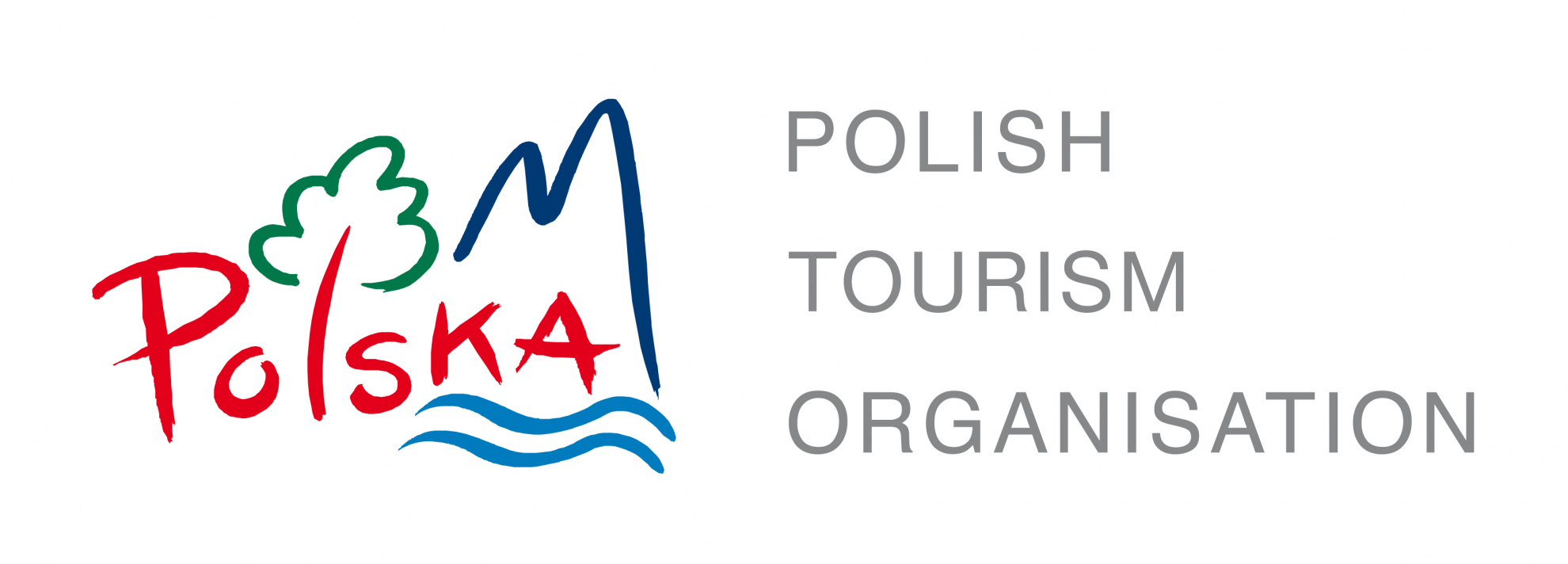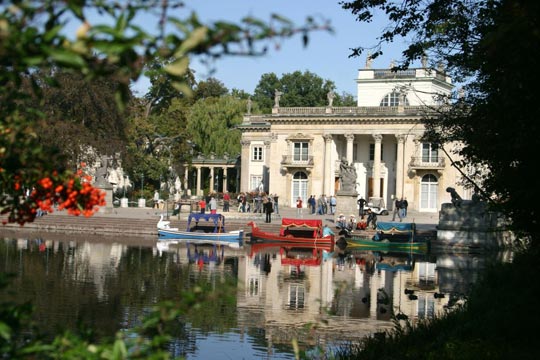This is the biggest and most beautiful park in Warsaw, and one of the loveliest palace/ park locations in all of Europe.
Łazienki Park, the favoured residence of Polish royalty, was constructed between 1774-1784, at the command of King Stanisław August Poniatowski. Stanislaw August was a great patron of the arts, and this is reflected in the sumptuous interiors of the main palace. A good deal of the monarch's original collection has survived. Lazienki Palac stands over 76 hectares, and combines elements of a traditional French garden within the landscape of a classically English park. This is the centre of numerous natural, cultural and scientific events and sources of entertainment, and is a much-loved place for residents and tourists alike to stroll.The palace is built on an artificial island that divides the lake into two parts, a smaller northern lake and a bigger southern lake; it is connected by two Ionic colonnaded bridges to the rest of the park.
Palace on the Island
The most significant building in the garden, a pearl of Polish architecture and one of the capital's symbols. It came into being when the last Polish king, S. A. Poniatowski, expanded a small building known as Lubomirski's Bath into one of his residences. Despite being badly damaged, the Palace survived World War II and was re-opened in 1960.
Myślewicki Palace
This palace is located at the end of the road leading from the city. It was designed in an early Classicist style and is one of Warsaw's few remaining examples from this architectural era.
White House
The building is an original memento from the time King S. A. Poniatowski — although devastated, it wasn't entirely destroyed during World War II. Preserved, original interiors include huge paintings in the dining room, original Chinese wallpaper in the drawing room, an office decorated with paintings and the King's original bed in the bedroom.
Old Orangery
The east wing features a beautiful interior, including one of the world's few examples of an authentic court theatre.
The west wing has servant living quarters and guest rooms.
Podchorążówka
This building made its mark in Poland's history — it was here that P. Wysocki urged cadets to pick up their weapons and revolt, beginning the November Uprising.
Podchorążówka currently host the I. J. Paderewski's Museum of Polish Emigration. Its collections are associated with Poles around the world.
Amphitheatre
Built on the bank of the pond, this structure is based on buildings that once stood in this exact spot. The audience area is reminiscent of the theatre in the Herculaneum — it has statues of famous dramatic writers around its top and the stage resembles the Roman Forum. The most unique feature of the Amphitheatre is the fact that the stage is separated from the audience by water.
Pavilions in the Park:
Hermitage
A small building that currently houses a gallery with temporary exhibitions. Concerts and meetings with authors and artists are hosted here.
Egyptian Temple
Built in the 19th century, but the current remains are only a part of its original structure. In the past, the main part of the building was a glazed conservatory containing fig trees. This building currently houses the Museum of Scouting.
New Orangery
Constructed in 1860, the New Orangery was used in winter to maintain the palace's exotic plants. It currently hosts a permanent garden and the Belvedere Restaurant.



